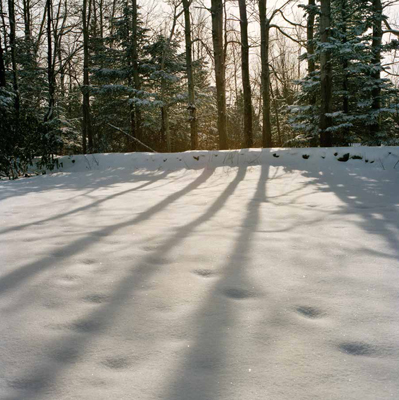
| |
"Margot Kelley is equally eloquent in words and images. In getting to know her neighbors the trees, she has unearthed the history, folklore, and science of her place. Her curiosity is guided by love and intelligence, leading her to deep collaboration across time and species. The result is a portrait of the desire to lay claim and be claimed by one's surroundings. One quiet acre here becomes a whole chorus of botanical voices that sing with the beautiful force of paying soulful attention." "In this wonderfully appreciative investigation into the origins of trees in her own yard, Kelley documents nature as artifact—how we humanize simple local landscapes, produce ecologies of great inherent complexity, and shape places of deep personal meaning." "Other People's Trees reminds us of the histories around us. By revealing the invisible stories of the trees in her yard, Margot Kelley shows us the many layers of people and events that coalesce over time to make up where we live. How we create our landscapes. How we are part of it. This is a lovely book about our relationships with trees and the places we live." "In A Field Guide to Other People's Trees, Margot Anne Kelley shakes our boughs from the get-go, because most of her "other people" are previous owners of her one-acre home in Maine, owners reaching back to the nineteenth century. Unlike most stories in which trees and nature serve as backdrop to human drama, in Kelley's book the trees and other plants in and around her yard are the central characters and the people the background. Through research and speculation about the herbal and cultural histories of the individual representatives of species growing around her home, Kelley brings her arboreal characters to life with wit and an admirable lack of sentimentality. When you get to know her hawthorn, her horse chestnut, her mountain ash, and other trees, plants, and grasses, you feel as if you've come to know a quirky cast of villagers. One of the most engaging things about this book is that Kelley loves to wonder about her trees and their ecological histories, and if answers to her questions don't come, no worries! In asking and wondering, she invites the reader to wonder with her. As the book unfolds, we attain a rich portrait of a place that is home not only to a succession of human owners who have influenced the woody and herbaceous plants, but also to bees, birds, deer, and other residents. The book is replete with stunning insights and memorable lines. Among my favorites: "A real botanist would likely insist that the larches aren't showing off then feigning atonement…No doubt she'd remind me that trees don't think like people. While that's doubtless true, trees and people do share something of the same history, both shaped as we are by slow-becoming." |
|
